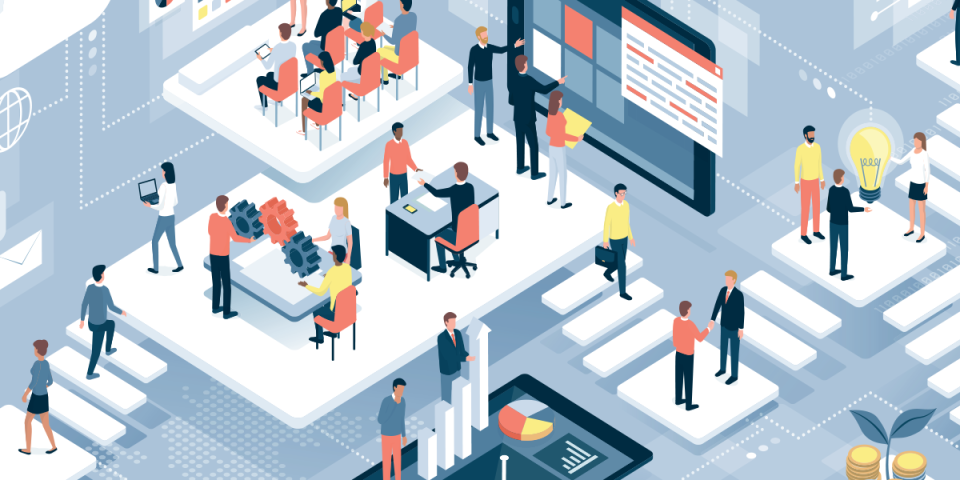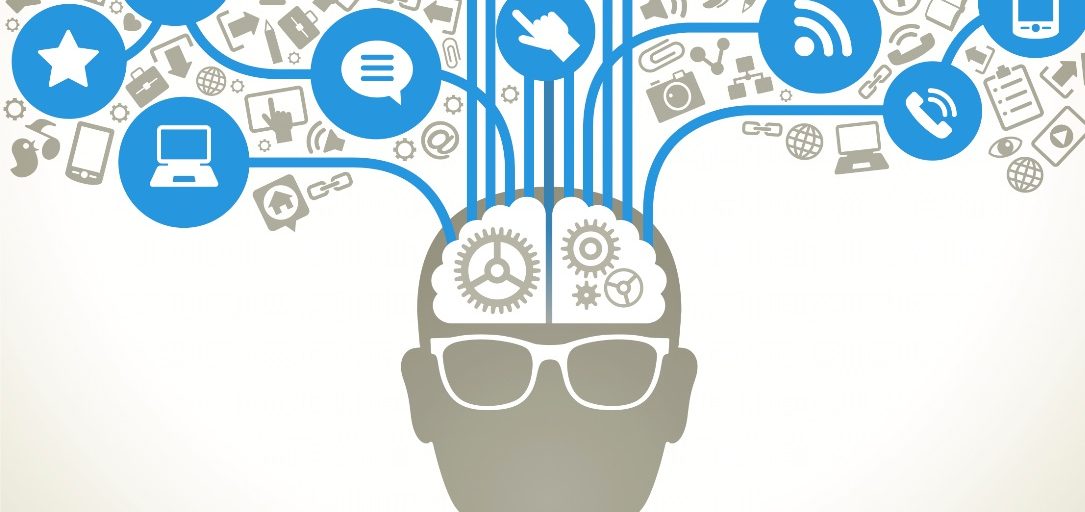We would all like to be able to learn better. Given an expanding universe of knowledge that doubles every decade, the ability to learn is critical to our success in life, if not our very survival. In the first of a series of articles, I will share what I have learned over a lifetime of teaching others and learning how to learn better myself.
Superlearning
You’ve probably met people for whom learning appears effortless. No matter what subject they take up, they quickly master it, acquiring new knowledge and skill along the way. Why are some people such great learners? Traditionally, we have thought it was all dependent upon superior intellect – some people are simply born smarter, blessed with a genetic advantage that psychologists attempt to measure with intelligence tests. While genetics undoubtedly plays a role in human capability to learn, it is not the sole explanation for superlearning. Instead, educators have discovered that those who do well in school and who learn new things easily throughout their lives possess a set of skills that accelerate and deepen their learning beyond what most of us achieve. These skills encompass not the subject of learning, but the process of how to learn.
Since we can’t do much about our genetic inheritance, it’s important to maximize our ability to learn by adopting the successful strategies of superlearners. Though each of us has a unique preferred learning style, developed through our life experience, the superlearner has a much larger range of styles and strategies to support their learning effort, making them much more successful as a result.
In this first article, I will briefly describe the key elements of learning to learn, focusing first on attitude. Subsequent articles will explore each of these elements in greater detail. First, here is a list of the keys to superlearning:
- Attitude – curiosity, open-mindedness and motivation are key attitudes that drive learning behavior and outcomes
- Metacognition – thinking about thinking, being self-aware, creating learning strategies
- Memory – using mnemonics and associations to improve memory and recall
- Research – identifying reliable sources of information, curating and applying research findings
- Evidence – evaluating facts vs. opinions, interpreting information
- Experimentation – applying the scientific method to confirm truth and discover new things
- Practice – perfecting practice, learning from mistakes, developing good learning habits
It All Starts with Attitude
Human behavior starts with attitude. What we think, feel and believe about the world around us causes us to make decisions based on the values we develop and ultimately to behave in ways we think are consistent with those values. In the case of learning, the key attitudes are:
- Curiosity – spark our interest and sustain our attention
- Open-mindedness – willingness to embrace new ideas and experiences and examine one’s beliefs
- Motivation – desire to achieve something of value through our own efforts
Curiosity is an attitude that is hard-wired into our brains. We naturally pay attention to things that are new, different or unique – the proverbial shiny object. As children, we were curious about everything and asked all kinds of questions to learn more. As we mature, curiosity often narrows to fewer areas of interest. Hobbies and passions dominate our adult curiosity, which can lead to indifference towards other subjects, particularly those that we have never encountered. It helps to remind ourselves of the unbridled curiosity of our childhood. I have found spending time with my five year old granddaughter is an excellent reminder of the wonders of curiosity. I have seen her experience and learn about the world around her and marveled at the depth of her questions and understanding, once things are put into language she can comprehend. Her greatest delight is to visit a new place and experience it for the first time. Adults should be as curious about the world around them as their children are.
Open-mindedness is the state of willingly embracing new experiences and ideas. It is closely tied to personality (one of the Big 5 Factors), but even for those who were not born with a predisposition for openness, it is possible to cultivate a more open-minded perspective on life. To start, open-mindedness is about critically examining your own beliefs, before being willing to listen and consider the beliefs of others. When we ask ourselves why we believe something, it forces us to examine our underlying motives and the knowledge upon which our beliefs are built. Through this process, we become able to see both the strengths and the weaknesses of our beliefs and become willing to consider other points of view.
The second critical part of open-mindedness is the ability to suspend judgement until we have considered all sides and gathered all the facts. Human nature leads us to make snap judgements based on limited data. While this is important when we face emergencies or danger, in the case of learning, prejudging things becomes a barrier. It is too easy to rationalize that learning something new will be a waste of time before we even have a chance to discover whether the new knowledge or skill would actually benefit us. Open-mindedness is also a key to forming new behaviors, since our willingness to try and put new skills into practice is the key to achieving proficiency in those skills.
Motivation Drives Learning
Motivation is a key attitude for learning. It is the desire to achieve something of value through our own efforts. It comes in two forms: intrinsic and extrinsic. Intrinsic motivation is our personal interest in a topic which drives us to learn more about it. It is related to self-satisfaction in that we feel better about ourselves when engaged in learning about something that we find highly interesting. Extrinsic motivation is the rewards we obtain from learning, conferred by others. GPA, degrees and credentials are all examples of extrinsic motivators of learning.
Consider this example of two students in an introductory college algebra class. One student is attending because it is a mandatory requirement. His goal is obtaining a passing grade of C. A second student is attending because she plans to major in math and needs this as one of the prerequisites. She is highly interested in algebra and already knows it well from two years of algebra in high school. Her goal is earning an A. As you can see, the motivations of these two students are quite different, leading them to approach their learning in this class very differently.
Psychologists have argued for decades about which is the superior form of motivation – intrinsic or extrinsic? A case can be made for both. Intrinsic motivation is one of the most powerful personality traits, driving people to overcome unbelievable odds through effort and persistence. Extrinsic motivation, in the form of money and other material rewards, is allegedly what makes the world go ‘round. We work every day to earn those extrinsic rewards which come to define who we are.
But what if someone is both intrinsically and extrinsically motivated? The combination can produce exponential increases in motivation. Psychologist Victor Vroom created a formula to describe this effect: M = I x O, where M is Motivation, I is Interest and O is outcome. In his view, personal motivation is a combination of the strength of our personal interest (intrinsic) times the value of the outcome or results we achieve (extrinsic). Note that he saw these two types of motivation as multiplying each other. The more our personal interest in a subject grows, the better we are likely to become at it, producing better outcomes. Conversely, the better the outcome that our learning produces, the more interest we take in the subject, thus reinforcing even better outcomes.
As an example, think of what you would consider to be the perfect job. Regardless of profession, I’d say we all could boil down the perfect job in one phrase – doing what I love and earning a lot of money doing it. This shows that our motivation is maximized when both interest and outcome are high. The reverse is also true – our motivation suffers when we lack interest and are not getting the desired results. Think about the worst job imaginable. It probably boils down to a version of this – doing something I hate and earning nothing for it.
For learning, especially adult training and education, extrinsic motivation tends to dominate. We are convinced to learn because of the benefits to us personally, like promotion and career mobility, and to the organizations who employ us, such as productivity and profitability. Unfortunately, less attention is given to the intrinsic side of learning. Without personal interest in the subject, learners often just go through the motions, doing the minimum to achieve a passing grade, much like the college liberal arts major forced to endure a semester of algebra. Although extrinsic motivation alone can get us to learn the bare minimum necessary to perform, it will not lead to true proficiency and expertise without a personal interest and commitment to apply new knowledge and to continue learning about the subject.
One of the ways educators can increase motivation is by addressing the importance of the subject matter to the learner. The acronym WIIFM – What’s In It For Me? – is a good reminder that we should personalize the benefits for the learner. If we can answer this question with both intrinsic and extrinsic benefits, people are going to be much more willing to make the effort to learn. Another way motivation affects learning is maintaining the confidence to sustain the learning effort over a long period of time. Learners become discouraged when they struggle to learn and do not achieve the outcome they expected. They may be tempted to give up altogether. Educators use constructive feedback, both positive reinforcement and corrective action, to maintain learner’s motivation throughout the learning process.
Make no mistake – learning is an act of free will. No one can force another human being to learn. It is only through personal effort, driven by motivation, that human beings have accumulated the vast storehouse of knowledge upon which our civilization depends. While the learner is primarily responsible for their own motivation, educators can support this by the way they design and deliver instruction.


